For once, we had a day without headwinds, in fact a day almost without wind. And no rain! We motored all day covering the almost 60 nm from Fair Isle to Kirkwall and managed to catch the tide to have a nice following tide the second half of the trip.

Kirkwall is the main town in the Orkneys and here you will find the cathedral for Orkney and Zetland (the old spelling of Shetland).

Orkney also have busses and we were able to by day tickets allowing us to hop on and off the local busses. Lucky for them (but not so good for us) they also have cruse ships visiting. One of days, we saw the island “invaded” by 6 000 tourists from two big ships.

Our first excursion was to a village older than the pyramids. Skara Brae dates to at least 3 100 BC. It is a small village with 8 houses. They had laid buried under the sand for millennia until uncovered by a severe storm in 1850.
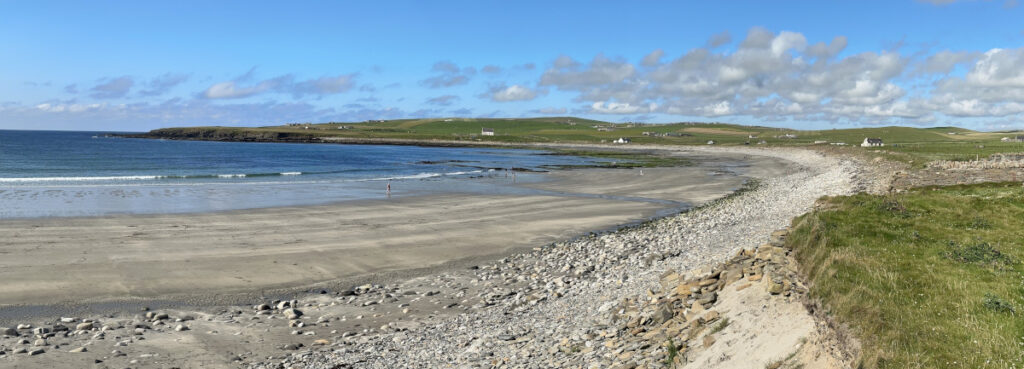
It is Europe’s most complete neolithic village and an UNESCO World Heritage Site. It has been called the ”Scottish Pompeii” because of its excellent preservation, including stone furniture.
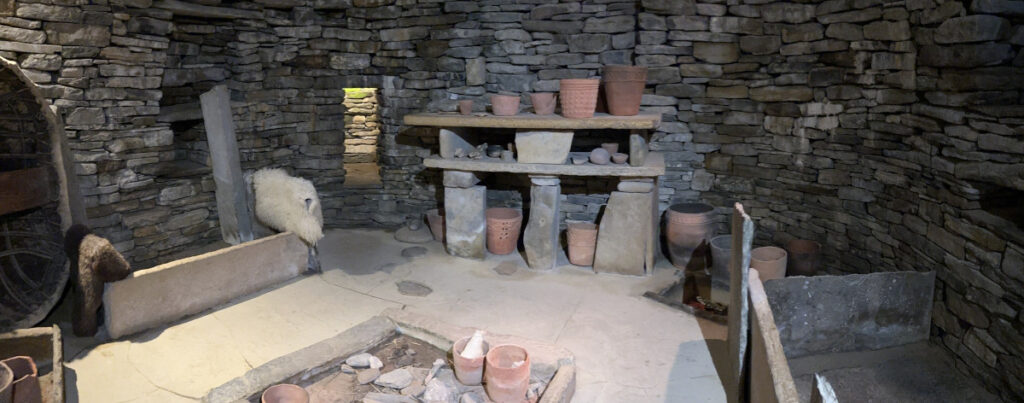
The old “Lairs house” of the land where Skara Brae lies is also open to public. In was interesting to visit and reminded us of the Agata Chrisie and other films from mid last century Great Britan.
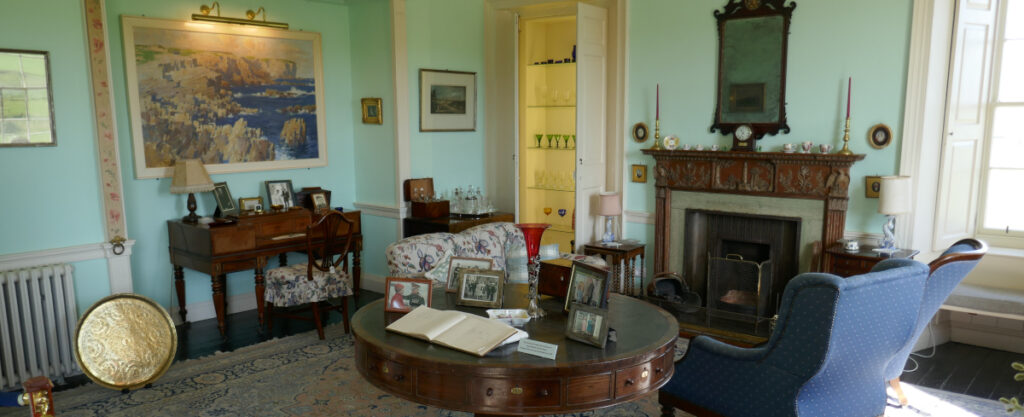
The second excursion was designed to avoid the “Cruised crowd”. We started by going south to St Margarets Hope. A small village on the SE side of Scapa flow.

Here, King Haakon IV of Norway anchored his fleet, including the flagship Kroussden that could carry nearly 300 men, on 5 August 1263, where he saw an eclipse of the sun before he sailed south to the Battle of Largs.

We did not see any Norsmen during our 4 km walk in the nice countryside.
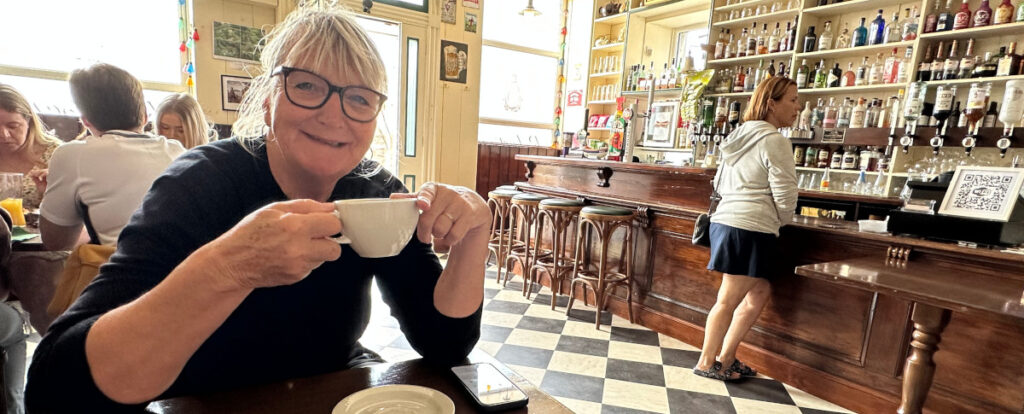
Coffee in an 17th century shop before entering the buss again to go back past Kirkwall and then westwards to the late neolithic/early bronze age “Ring of Brodgar”, a most impressive ring of standing stones. Its age is not known, but there is a ditch (4 m deep and 10 m wide) surrounding the stones that was cut from the bedrock around 2 600 to 2 400 BC.

Originally, there may have been up to 60 stones. Today, there are 31, from seven different locations, 21 stones are standing but, 13 of them was re-erected in 1906. The purpose of the ring is unknown, no evidence of activity has been found within the ring.
The next bus took us to Stromness in the west for a walk in the old town and a beer (or two) before heading back to Kirkwall and Sally.

We took the bikes the next day and cycled over the hill to Scapa Bay. A wrong turn took us down to the beach from where we could see our destination, Scapa distillery.

We were the only ones on our tour and had a very nice private guide in Kalle (his parents had seen some cross-country skiing and got inspired by a Swedish skier). Interesting to see how this high profile (read dear (=expensive in Scottish)) whiskey is made.
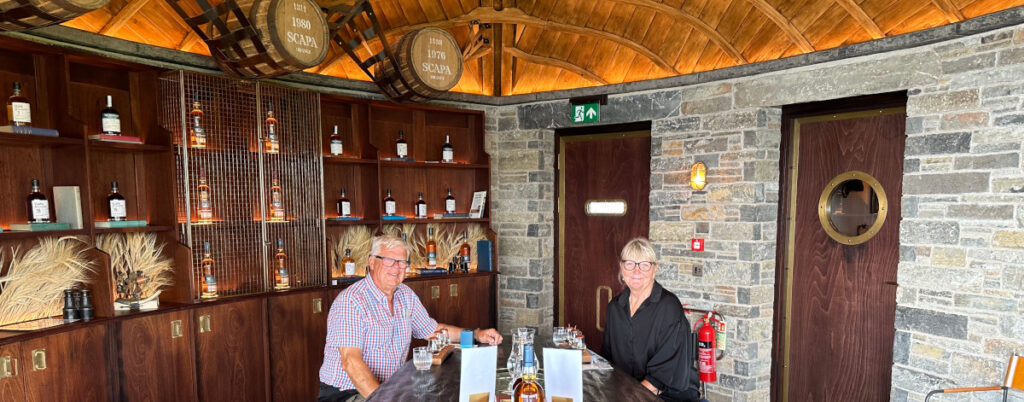
We had a Tasting of three quite different whiskeys in the most impressive tasting room we have been to. The Scapa whiskeys are not peated as most other Scotch whiskeys and have a smote, round and, full body. We settled on buying an 11-year-old that we liked very much.
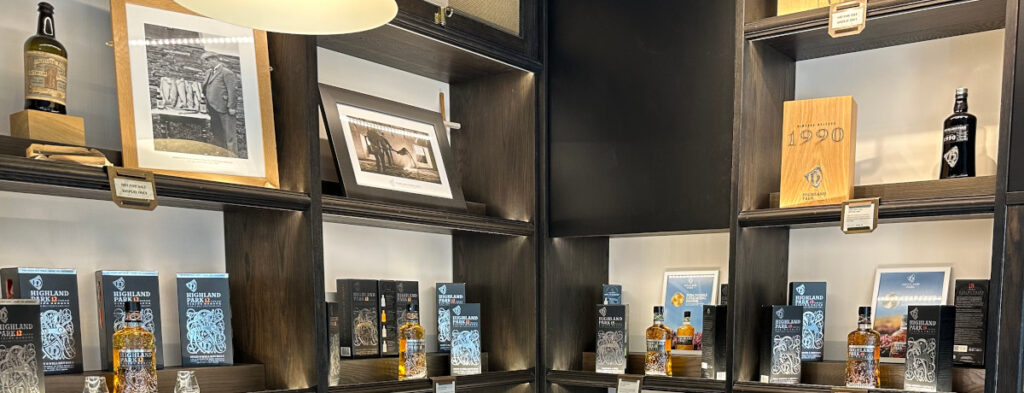
From there, we went to the Highland Park shop in town (the distillery is closed for renovation). As they did not want to give us a chance to taste without paying for a full tasting tour, we left without buying anything.
Today has been a day of provisioning and preparing ourselves and Sally for the two nights crossing back to Norway.
